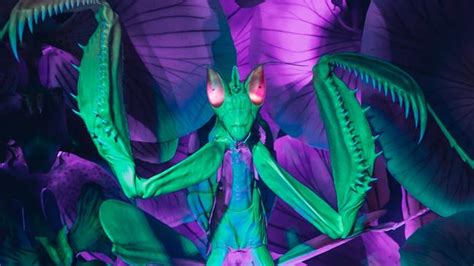The Chinese Lantern Festival, a centuries-old tradition, continues to captivate audiences with its vibrant displays and rich cultural heritage. As one of the most anticipated events in the lunar calendar, it marks the end of the Chinese New Year celebrations with a dazzling array of lanterns, each symbolizing hope, prosperity, and unity. This article delves into the festival’s historical significance and explores how traditional and modern lantern designs bring communities together. From engaging activities that invite youth participation to the mouthwatering culinary delights that accompany the festivities, discover why the Chinese Lantern Festival remains a must-attend event for both youth and event enthusiasts alike.
Come join ujiyor.net in exploring this topic extensively.
1. Historical Significance of the Chinese Lantern Festival
The Chinese Lantern Festival, celebrated on the 15th day of the first lunar month, has its roots in ancient China, dating back over 2,000 years to the Han Dynasty. Initially a religious observance to honor the Buddha, the festival evolved into a cultural celebration that symbolizes the return of spring and the reunion of family and friends. Lanterns, traditionally made from paper and illuminated by candles, were believed to ward off evil spirits and bring good fortune. Over time, these lanterns became more elaborate, representing various symbols of prosperity and unity. The festival also honors the ancient practice of solving riddles written on lanterns, a tradition that encourages intellectual engagement and community bonding.

2. Traditional and Modern Lantern Designs
The art of lantern-making has evolved significantly from its traditional roots to the modern interpretations seen today. Traditionally, Chinese lanterns were made from simple materials such as bamboo, wood, and paper, often shaped into spheres, cylinders, or more intricate forms like animals and flowers. These lanterns were adorned with symbolic images and calligraphy, each design carrying specific meanings, such as longevity, prosperity, and happiness. The lanterns were illuminated by candles, casting a warm, flickering glow that added to their charm and mystique.
In contrast, modern lantern designs have embraced new materials and technologies, leading to more elaborate and diverse creations. LED lights have largely replaced candles, offering safer and more vibrant displays. Contemporary lanterns now come in a wide range of shapes and sizes, including large-scale installations that depict famous landmarks, mythical creatures, and popular cultural icons. These designs often incorporate elements of modern art and technology, creating interactive experiences where lanterns respond to sound, movement, or touch.
Despite these innovations, the essence of the lantern as a symbol of hope, unity, and celebration remains unchanged. Whether traditional or modern, each lantern serves as a reminder of the festival’s rich history while also reflecting the creativity and cultural expression of the present day.

3. Key Festival Activities and Events
The Chinese Lantern Festival is marked by a variety of activities and events that bring communities together in joyous celebration. One of the most iconic activities is the lighting and release of lanterns, where participants craft or purchase lanterns, often inscribed with wishes or riddles, and release them into the night sky or float them on rivers. This act symbolizes the release of the past and the welcoming of new beginnings.
In addition to lantern displays, the festival features traditional performances such as dragon and lion dances, which are believed to bring good luck and chase away evil spirits. These vibrant, energetic performances are often accompanied by the sound of drums, gongs, and firecrackers, creating an exhilarating atmosphere.
Another popular event is the riddle-solving contest, where participants gather around lanterns with riddles attached and attempt to solve them. This intellectual challenge adds a layer of fun and community interaction to the festival.
Food stalls offering festive delicacies like tangyuan (sweet glutinous rice balls) are also a staple, allowing attendees to indulge in traditional treats that symbolize unity and family togetherness. Each of these activities contributes to the festival’s enduring appeal, blending tradition with communal celebration.

4. Youth Engagement and Interactive Experiences
Youth engagement plays a crucial role in keeping the Chinese Lantern Festival vibrant and relevant for future generations. In recent years, festival organizers have introduced a range of interactive experiences designed to appeal to younger audiences, blending traditional elements with modern, engaging activities.
One popular attraction is lantern-making workshops, where children and young adults can learn the art of crafting their own lanterns. These workshops not only teach traditional techniques but also encourage creativity, allowing participants to design lanterns that reflect their personal styles and interests. This hands-on activity fosters a deeper connection to the festival’s cultural roots while promoting artistic expression.
Interactive light installations and digital projections have also become a hit among younger attendees. These modern displays often incorporate augmented reality (AR) elements, where participants can use their smartphones to interact with virtual lanterns, solve digital riddles, or even participate in virtual lantern parades. This blend of technology and tradition creates a unique experience that resonates with tech-savvy youth.
Furthermore, social media challenges and competitions, such as the best lantern photo contest or hashtag campaigns, encourage youth participation and help spread the festival’s spirit online. These activities not only engage the younger generation but also ensure that the Chinese Lantern Festival continues to evolve and thrive in a digital age.
5. Popular Festival Locations and Venues
The Chinese Lantern Festival is celebrated in various locations across China and around the world, each offering its unique charm and atmosphere. In China, one of the most famous celebrations takes place in Xi’an, where the ancient city wall provides a stunning backdrop for the elaborate lantern displays. The annual lantern show here is renowned for its grandeur, featuring thousands of lanterns that depict scenes from Chinese history, mythology, and modern life.
Another popular destination is the Yuyuan Garden in Shanghai, where the historic gardens are transformed into a magical wonderland of light and color. The intricate designs and traditional aesthetics of the lanterns at Yuyuan Garden attract both locals and tourists, making it a must-visit during the festival.
Internationally, the festival has gained popularity in cities with significant Chinese communities, such as San Francisco, Sydney, and London. These locations host large-scale lantern displays and cultural events, bringing the essence of the Chinese Lantern Festival to a global audience. Each venue, whether in China or abroad, offers a unique experience that showcases the beauty and cultural significance of this timeless tradition.
6. Festival Food and Culinary Delights
The Chinese Lantern Festival is not only a visual feast but also a culinary delight, offering a variety of traditional foods that hold symbolic meaning. Among the most iconic festival treats is tangyuan, sweet glutinous rice balls typically filled with sesame paste, red bean, or peanut butter. These round, chewy desserts symbolize family unity and togetherness, as their shape represents wholeness and completeness. Eating tangyuan during the festival is believed to bring harmony and happiness to families.
In addition to tangyuan, other festive foods are enjoyed depending on the region. In northern China, yuanxiao, a variation of tangyuan, is popular. Yuanxiao are also glutinous rice balls but are prepared differently, with the filling rolled in rice flour rather than being wrapped in it. These treats are often served in a sweet soup or deep-fried for added texture.
Street food stalls at the festival offer a wide array of snacks and delicacies, from savory dumplings and spring rolls to sweet pastries and candied fruits. These foods not only satisfy the palate but also reflect the diverse culinary traditions of different regions in China.
Festival-goers also enjoy warming drinks like sweet fermented rice wine and herbal teas, which provide comfort during the cool evenings. Together, these culinary delights enhance the festive atmosphere, offering a taste of tradition that complements the visual spectacle of the lantern displays.
The Chinese Lantern Festival, with its blend of historical significance, vibrant lantern designs, and engaging activities, remains a cherished celebration that captivates audiences of all ages. From traditional crafts and modern innovations to delicious culinary treats and lively events, the festival offers a rich tapestry of cultural experiences. As it continues to evolve while honoring its roots, the festival ensures that its radiant spirit and timeless traditions are celebrated and enjoyed by
ujiyor.net

